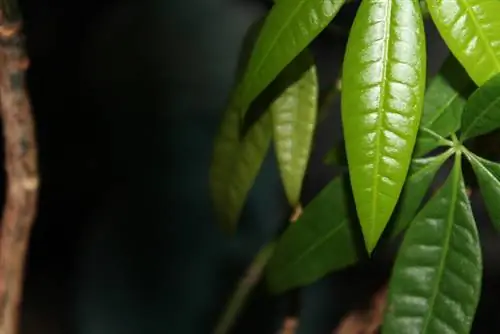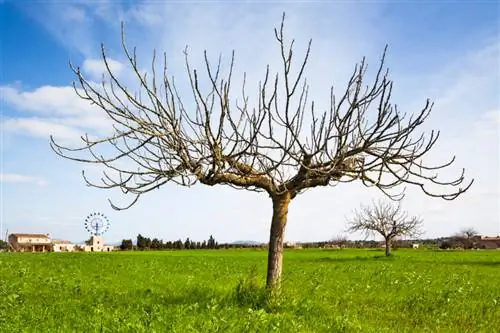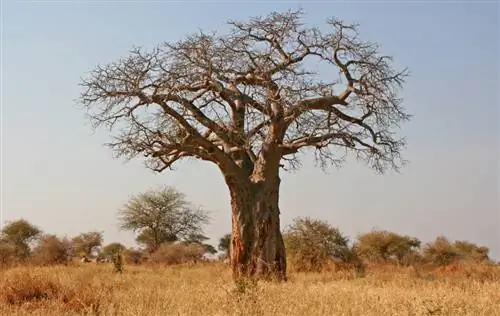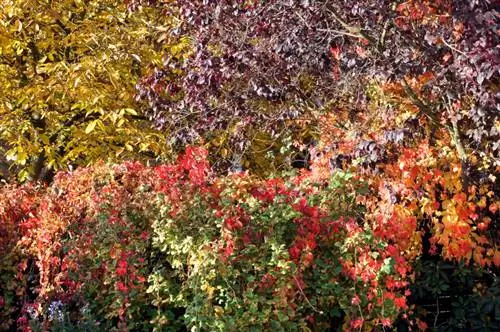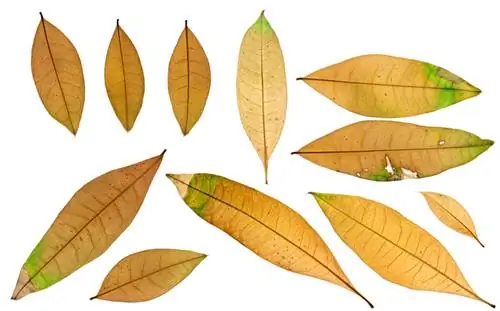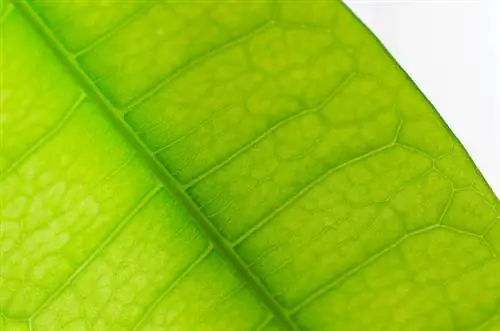- Author admin [email protected].
- Public 2023-12-16 16:46.
- Last modified 2025-01-23 11:21.
Although the lucky chestnut or Pachira aquatica is a robust and actually easy-care houseplant, it is considered difficult. It needs an ideal location and optimal care to thrive. If it loses a lot of leaves, this is a sign that the lucky chestnut is not doing well.
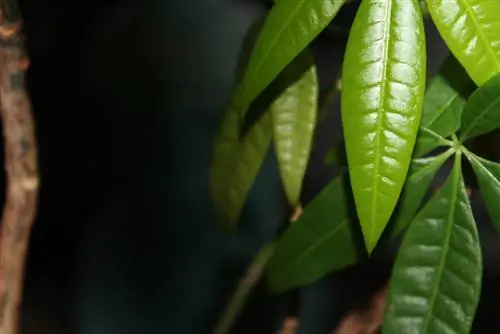
Why is my lucky chestnut losing leaves?
A lucky chestnut (Pachira aquatica) loses leaves if it has unfavorable conditions, such as: a location that is too dark, a temperature below 15 degrees, drafts, waterlogging or pest infestation. To counteract this, adjust the location and water with sensitivity.
Why does the lucky chestnut lose its leaves?
When the lucky chestnut loses a lot of leaves, it is always a cause for concern. Possible causes include:
- location too dark
- location too cool
- Draft
- Waterlogging
- Pest Infestation
Often the cause lies in the intertwined trunks of the lucky chestnut. If you have purchased a plant in this way, you should immediately untangle it and plant the trunks individually. Repot the Pachira aquatica in fresh soil (€5.00 on Amazon).
Slight leaf loss is harmless
Slight leaf loss, especially in the lower area, is not a cause for concern. This is a natural process through which the characteristic trunks are created.
The right location for a lucky chestnut
Lucky chestnuts prefer a location that is as bright as possible. Make sure that the ambient temperature does not fall below 15 degrees. This is especially true if you care for the tree outside in summer.
The lucky chestnut also doesn't like drafts or frequent changes of location. Protect them from drafts and, if possible, always leave them in the same location.
Watering Pachira aquatica with sensitivity
Probably the most common problem that leads to the loss of leaves is excessive moisture in the root ball. Waterlogging not only causes the plant to lose its leaves, it also causes the trunk to become soft.
Water lucky chestnuts only sparingly and only when the root ball is almost dry. In winter, reduce the amount of water additionally.
Especially in winter, the lucky chestnut appreciates occasional spraying of the leaves with lukewarm, low-lime water. This also prevents pests.
Tip
Brown spots on the leaves of Pachira aquatica are often an indication of pests or viral diseases. Examine the plant closely to identify possible problems in time. If an infestation has progressed significantly, the lucky chestnut can usually no longer be saved.

